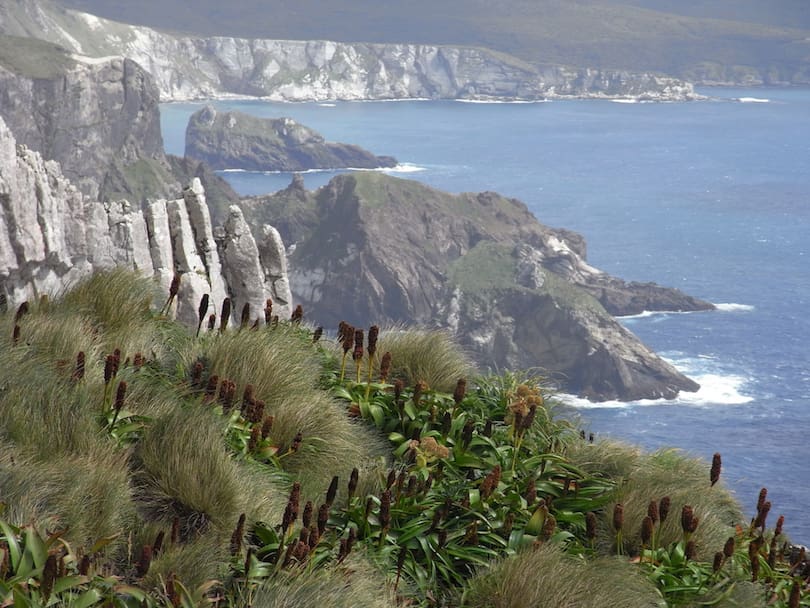Discover the wonders of Kaziranga National Park, Assam, a biodiversity hotspot and UNESCO World Heritage Site. This comprehensive guide offers insights, experiences, and all you need to know about this captivating destination.
Introduction: Exploring the Treasures of Kaziranga National Park, Assam
Welcome to the enchanting realm of Kaziranga National Park, Assam, a true paradise for nature lovers and wildlife enthusiasts. Nestled in the heart of northeastern India, Kaziranga is a sprawling reserve renowned for its conservation efforts and rich biodiversity. This captivating sanctuary is not only a UNESCO World Heritage Site but also home to two-thirds of the world’s one-horned rhinoceros population. Embark on a thrilling journey with us as we delve deep into the wonders of Kaziranga National Park, Assam.
Kaziranga National Park, Assam: An Overview
Kaziranga National Park, Assam, covers an impressive area of over 430 square kilometers and is situated in the Golaghat and Nagaon districts of Assam. Established in 1908, it was declared a Tiger Reserve in 2006 and has since become a symbol of successful wildlife conservation efforts in India. The park is situated along the banks of the mighty Brahmaputra River, creating a diverse ecosystem that supports a wide variety of flora and fauna.
The Fascinating Wildlife of Kaziranga National Park, Assam
- One-Horned Rhinoceros: Pride of Kaziranga The park’s most iconic resident is undoubtedly the one-horned rhinoceros (Rhinoceros unicornis). Kaziranga is home to the largest population of these majestic creatures, making it a sanctuary critical for their survival. The park’s conservation efforts have led to a steady increase in their numbers over the years.
- Royal Bengal Tigers: The Elusive Cats Kaziranga National Park, Assam, is also known for its population of Royal Bengal Tigers (Panthera tigris tigris). Though they are elusive and seldom seen, their presence adds a sense of mystery and excitement to the park. The lush grasslands and dense forests provide an ideal habitat for these magnificent creatures.
- Asian Elephants: Gentle Giants of the Forest Another awe-inspiring sight in Kaziranga is the Asian Elephant (Elephas maximus). These gentle giants roam freely in the park’s vast expanse, contributing to its diverse ecosystem. Observing a herd of elephants in their natural habitat is an unforgettable experience.
- Wild Buffaloes: Guardians of the Wetlands Kaziranga is also home to the Wild Buffalo (Bubalus arnee), a species facing endangerment. The park’s wetlands provide the perfect environment for these majestic creatures, and spotting them can be a rare yet gratifying encounter.
- Other Notable Wildlife Species The park boasts an impressive array of wildlife, including Indian Bison (Bos gaurus), Swamp Deer (Rucervus duvaucelii), Hog Deer (Axis porcinus), Wild Boar (Sus scrofa), and various primate species like Assamese Macaque (Macaca assamensis) and Capped Langur (Trachypithecus pileatus).
Birdwatcher’s Paradise: Avian Diversity in Kaziranga National Park, Assam
The diverse landscapes of Kaziranga make it an ideal habitat for numerous avian species, making it a birdwatcher’s paradise. Here are some of the fascinating birds you might encounter:
- Great Indian Hornbill: The Winged Royalty With its impressive size and vibrant plumage, the Great Indian Hornbill (Buceros bicornis) commands attention. Kaziranga provides these magnificent birds with a safe haven, and spotting one soaring through the skies is an unforgettable sight.
- Bengal Florican: A Rare Beauty The Bengal Florican (Houbaropsis bengalensis) is an endangered species and a rare sighting in the grasslands of Kaziranga. The park’s efforts in preserving its natural habitat contribute significantly to the conservation of this exquisite bird.
- Spot-Billed Pelican: Graceful Aquatic Divers The wetlands and water bodies in Kaziranga attract the majestic Spot-Billed Pelican (Pelecanus philippensis). Watching these graceful birds dive into the waters in search of fish is a mesmerizing experience.
- Crested Serpent Eagle: Ruler of the Skies The Crested Serpent Eagle (Spilornis cheela) is a common sight in Kaziranga. With its keen eyesight and agile flight, this raptor is an efficient predator, preying on small mammals and reptiles.
- Other Feathered Residents Kaziranga also houses a myriad of other bird species, including Open-Billed Storks (Anastomus oscitans), Fishing Eagles (Haliaeetus leucoryphus), Painted Storks (Mycteria leucocephala), and many more.
Diversity in Flora: Green Haven of Kaziranga National Park, Assam
Kaziranga National Park, Assam, is not only a treasure trove of wildlife but also a haven of diverse flora. The park’s vegetation comprises various ecosystems, including:
- Tall Grasslands: Abode of the Rhino The tall elephant grass (Saccharum spp.) is one of the defining features of Kaziranga’s landscape. It provides an ideal habitat for the one-horned rhinoceros and several other species, offering them protection and sustenance.
- Tropical Moist Deciduous Forests: A Verdant Canopy Kaziranga also features tropical moist deciduous forests, dominated by trees like Indian Kino (Pterocarpus marsupium), Indian gooseberry (Phyllanthus emblica), and the majestic Silk Cotton Tree (Bombax ceiba).
- Alluvial Savannah Woodlands: A Unique Ecosystem The alluvial savannah woodlands of Kaziranga create a unique ecosystem that supports a variety of wildlife, including the park’s tiger population.
- Aquatic Vegetation: Lifeline of Wetlands The wetlands and water bodies in Kaziranga are teeming with aquatic vegetation, including water lilies, lotus, and various submerged grasses.
Kaziranga: A Triumph of Conservation Efforts
The conservation success story of Kaziranga National Park, Assam, is a testament to the relentless efforts of various stakeholders and wildlife enthusiasts. Some key aspects of the park’s conservation initiatives include:
- Anti-Poaching Measures: Protecting the Wildlife Kaziranga employs dedicated forest guards and modern surveillance technology to prevent poaching and protect the park’s precious wildlife.
- Community Involvement: Coexisting with Wildlife The park collaborates with local communities to foster a sense of ownership and responsibility towards wildlife conservation. Initiatives such as eco-tourism provide livelihood opportunities and promote a sustainable balance between nature and humans.
- Habitat Restoration: Ensuring a Thriving Ecosystem Ongoing efforts are made to restore and enhance the diverse habitats within the park, creating a conducive environment for various species to flourish.
- Conservation Breeding Programs: Safeguarding Endangered Species Kaziranga actively participates in conservation breeding programs to protect and reintroduce endangered species, contributing to their survival.
Exploring Kaziranga: Safari Adventures and Beyond
- Safari Experiences: Up Close with Wildlife Embark on an exhilarating safari through Kaziranga’s wilderness to witness the charismatic residents in their natural habitat. Jeep and elephant safaris offer unique perspectives and unforgettable encounters with the park’s wildlife.
- Majuli Island: Cultural Heritage Extend your journey to Majuli Island, the world’s largest river island, located nearby. This cultural hub is renowned for its vibrant traditions, art, and religious heritage.
- Assam Tea Gardens: A Refreshing Detour A visit to the lush tea gardens of Assam is a delightful experience. Savor the aroma of freshly brewed tea and gain insights into the intricate process of tea production.
- Panbari Reserve Forest: Nature’s Hidden Gem Explore the lesser-known Panbari Reserve Forest, located adjacent to Kaziranga. This pristine forest sanctuary is home to a variety of flora and fauna and offers a tranquil escape.
FAQs about Kaziranga National Park, Assam
Q: When is the best time to visit Kaziranga National Park, Assam? A: The ideal time to visit Kaziranga is during the dry season, from November to April, when wildlife sightings are most frequent and the weather is pleasant.
Q: Are there any accommodations available inside the park? A: Yes, Kaziranga offers various accommodation options, including jungle lodges, resorts, and forest bungalows, providing visitors with a chance to immerse themselves in the wilderness.
Q: Can I spot the elusive Royal Bengal Tigers during a safari? A: While tiger sightings are rare due to their elusive nature, there is a possibility of spotting these majestic cats during a safari.
Q: Is there an age restriction for safari rides? A: Yes, for elephant safaris, children below eight years are not allowed, and for jeep safaris, children below five years are not permitted.
Q: How can I contribute to the conservation efforts at Kaziranga? A: Visitors can support the park’s conservation initiatives by adhering to park guidelines, promoting responsible tourism, and making donations to conservation programs.
Q: Are there any restrictions on photography within the park? A: Yes, visitors are advised not to use flash photography during safaris to avoid disturbing the animals. Additionally, drones are not allowed inside the park.
Conclusion: Embrace Nature’s Bounty at Kaziranga National Park, Assam
Kaziranga National Park, Assam, is a symphony of sights and sounds, where wildlife thrives, and nature flourishes. From the iconic one-horned rhinoceros to the elusive Royal Bengal Tigers, every moment in this sanctuary is a celebration of life’s wonders. As you traverse through its grasslands and forests, you’ll be captivated by the beauty and grandeur of this precious ecosystem. Kaziranga is not just a park; it’s a testament to the remarkable achievements of wildlife conservation in India. So, pack your bags, grab your camera, and embark on a journey like no other—a journey into the heart of Kaziranga’s untamed wilderness.







